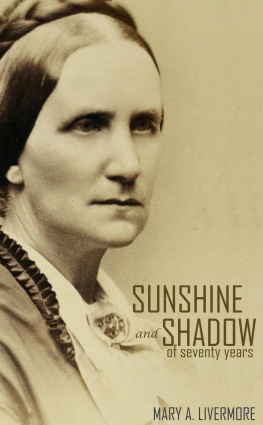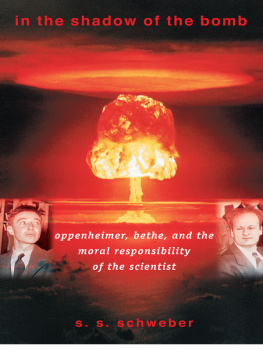Thank you for downloading this Simon & Schuster eBook.
Join our mailing list and get updates on new releases, deals, bonus content and other great books from Simon & Schuster.
C LICK H ERE T O S IGN U P
or visit us online to sign up at
eBookNews.SimonandSchuster.com
Contents
To Deborah, Andrew, and David
Introduction
Creation and Destruction
On July 4, 2012, a pair of international scientific teams announced that they had discovered an elementary particle known as the Higgs boson with the help of one of the most complex research machines on earth: the Large Hadron Collider. The Higgs boson had been the target of an intensive search by physicists for nearly a half century, or since its existence had been posited in 1964 as the carrier of a field that gives mass to matter in the universe. But it took the collider to find it.
The scheduled announcement, at the Geneva, Switzerland, headquarters of the European Organization for Nuclear Research (CERN), the colliders builder and owner, drew spectators from around the world and the highest echelons of physics. Present was Peter Higgs, eighty-three. The British physicist who had predicted the existence of the particle that bore his name stared, like every other guest, at a screen at the front of a CERN lecture hall. On it were displayed PowerPoint slides of data produced from the almost unimaginably violent collisions between beams of energized protons that the LHC experimenters had aimed at one another point-blank, hoping to coax the Higgs boson into showing itself for an infinitesimal moment within the resulting maelstrom of energy. The numbers told them, to within a convincing range of probability, that the experimenters had found the Higgs boson. When the presentation ended, there was a standing ovation for the research teams and expressions of awe for the incredible apparatus that brought them their victory.
Everything about the Large Hadron Collider is big. Its construction, from conception to the generation of its first proton beam, took twenty-five years and cost $10 billion. Buried three hundred feet beneath the pastoral landscape on the border of France and Switzerland, the machine occupies a concrete tunnel seventeen miles in circumference. Inside the tunnel, 9,600 magnets chilled cryogenically to nearly minus 300 degrees Celsius guided the protons toward their head-on collisions at velocities approaching 99.99 percent of the speed of light.
The collider, and the discovery announced that summer day in 2012, stood then as the ultimate expressions of Big Science: the model of industrial-scale research that has driven the great scientific projects of our timethe atomic bomb, the race to put a man on the moon, the dispatch of robotic probes beyond the confines of the solar system, investigations of the workings of nature at the microcosmic scale of subatomic particles. To this day, Big Science guides research in academia, industry, and government. It addresses gigantic questions, and therefore requires gigantic resources, including equipment operated by hundreds or thousands of professional scientists and technical experts. Its projects often cost more than what a single university can afford, or even a single country; CERNs collider draws its financial and technical support not only from the organizations twenty-one member states but also from more than sixty other countries and international institutions. Those are the dimensions of Big Science today. As physicist Robert R. Wilson has written, research on this scale cannot be achieved by solitary efforts: It is almost as hard to reach the nucleus by oneself as it is to get to the moon by oneself.
Yet the creation of Big Science was itself a solitary effort. The birth of this new way of probing natures secrets can be traced to the day nearly nine decades ago in Berkeley, California, when a charming and resourceful young scientist with a talent for physics and perhaps an even greater talent for promotion pondered a new invention and declared, Im going to be famous!
His name was Ernest Orlando Lawrence. His invention would revolutionize nuclear physics, but that was only the beginning of its impact. It would transform everything about how science was conducted, in ways that still matter today. It would remake our understanding of the basic building blocks of nature. It would help win World War II. Lawrence called it the cyclotron.
The Large Hadron Collider is a direct offspring of Lawrences invention, though few today would recognize the family resemblance. The first cyclotron fit in the palm of Lawrences hand and cost less than one hundred dollars. The LHC comprises several advanced cyclotrons as well as synchrocyclotrons and other advanced accelerators designed to propel subatomic particles to unnatural velocities, all descending from the original design. Lawrences Radiation Laboratory in Berkeley employed about sixty scientists and a couple of dozen technicians at its peak. That seemed like a veritable army to Lawrences professional forebears, such as Sir Ernest Rutherford of Cambridge Universitys legendary Cavendish Laboratory, who made earthshaking discoveries with two assistants, employing handmade toolssome of which could fit comfortably on his workbenchin the first decades of the twentieth century. But it would look like a paltry brigade to the two teams that announced the Higgs discovery, which numbered three thousand members each.
Lawrences role as the creator of Big Science was widely acknowledged by his peers but is largely overlooked today. Yet it is worth reexamining for several reasons. One is that the instincts and ambitions that drove him in his research, along with his personal management style, gave Big Science its lasting character. But there is more: his is a compelling story of a scientific quest that spanned a period of unprecedented discovery in physics and placed him at the crossroads of science, politics, and international affairs.
From the late 1930s on, there was scarcely a question of national scientific policy on which the views of Ernest Lawrence were not sought. As the inventor of the worlds most powerful atom smasher and leader of the nations greatest research laboratory, his influence expanded with the onset of World War II. By placing his personal commitment behind the Allied effort to build the atomic bomb, he saved the program from nearly certain cancellation at a crucial moment in its history. Then, after the war, it was his prestige and influence that helped launch the program to build the hydrogen bomb. The world we live in today, poised uneasily under a thermonuclear sword of Damocles, surely stands as Ernest Lawrences bequest, albeit an equivocal one, to modern civilization.
Lawrence knew on the day of his brainstorm in 1929 that he had happened upon an astoundingly effective new way of accelerating subatomic particles. His goal was to use them as probes to discover the structure of the nucleus, the charged kernel of protons and neutrons that accounts for most of the atoms mass, as someone might wield a screwdriver to probe a desktop radios electronic innards. His cyclotron was a conceptually simple solution to the riddle of how to pump up the energies of subatomic particlesspecifically protons, the nuclei of hydrogen atomsso they could penetrate the protective electric field of the nucleus. Scientists and engineers all over the world were working on this problem. Lawrence solved it.
Physics then was undergoing a difficult transition. The geniuses of small science, like Rutherford and Irne and Frederic Joliot-Curie, the daughter and son-in-law of Marie Curie, had worked to the limit the humble tools nature had given them. With his handmade apparatuses, Rutherford had discovered the nucleus and intuited the existence of the neutron, which later would be found by his deputy, James Chadwick, in another feat of small-scale experimentation. The Joliot-Curies, working in their own modest lab, continued Marie Curies investigations into the mysteries of radioactivity, learning to transmute one element into another by bathing the first in radioactive emissions. Both labs relied on naturally radioactive substances such as radium and polonium to produce their invisible subatomic probes.
Next page










